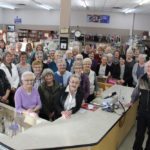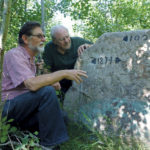
Tag Archives Mennonite

TRUTH AND RECONCILIATION: Did someone steal my land?
A Mennonite’s journey to square history, reconciliation and cultural snobbery

Old house razing entertains, educates Basswood brothers
For these four lads it was a chance to wreck something for praise, not retribution

Folk art reveals a lesser known side of Mennonite life, says Manitoba artist
Artist Margruite Krahn says vivid designs are a reminder of the value of bringing more colour into our lives

Blessings from bargains
Sales of donated items at the MCC Thrift Shop in Carman this year generate $240,000 for Mennonite Central Committee’s international relief, development and peace work

Not just for city kids
Rural students at one Hutterite school enjoyed Agriculture in the Classroom activities last year

New atlas documents Mennonite history
Two amateur historians pull together a comprehensive record of their communities in the East Reserve

Steinbach museum reveals a global recipe swap
A new exhibit at Steinbach’s Mennonite Heritage Village Museum explores the impact of migration and other influences on Mennonite food

Gold medal speed skater signs up to be farmer for fundraising campaign
A new initiative invites groups and individuals to sponsor an acre


